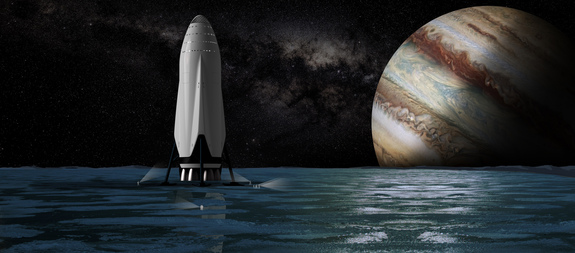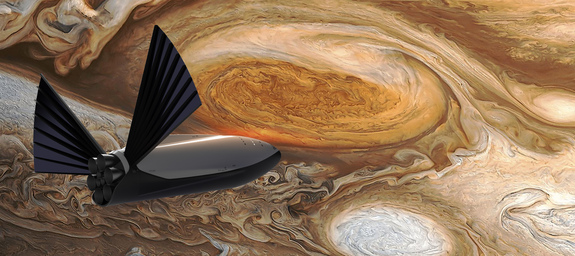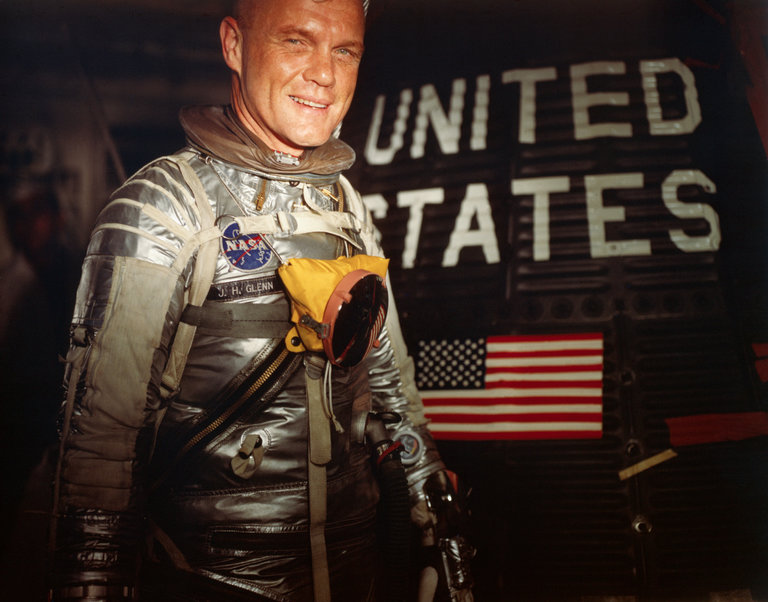Hamartia Antidote
ELITE MEMBER

- Joined
- Nov 17, 2013
- Messages
- 35,188
- Reaction score
- 30
- Country
- Location
http://www.space.com/34219-spacex-mars-spaceship-solar-system-exploration.html

SpaceX's Mars Spaceship Could Explore the Entire Solar System, Elon Musk Says
The spaceship that SpaceX is building to colonize Mars could also take people out to Jupiter's ocean-harboring moon Europa and beyond, company founder and CEO Elon Musk said.
On Tuesday (Sept. 27), Musk unveiled SpaceX's planned Interplanetary Transport System (ITS), a rocket-spaceship combo that the billionaire entrepreneur hopes will allow humanity to establish a permanent, self-sustaining, million-person settlement on the Red Planet.
Mars is the first planned stop for ITS, but it may not be the last. [SpaceX's Massive New Spaceship Could Go Beyond Mars (Video)]
"This system really gives you freedom to go anywhere you want in the greater solar system," Musk said Tuesday at the International Astronautical Congress meeting in Guadalajara, Mexico.

Artist's concept of SpaceX's Interplanetary Transport System spaceship on Jupiter's ocean-harboring moon Europa.
Credit: SpaceX
With the aid of strategically placed refueling depots, "you could actually travel out to the Kuiper Belt [and] the Oort Cloud," Musk added. The Kuiper Belt is Pluto's neck of the woods, while the Oort Cloud, the realm of comets, is even more distant; it begins about 2,000 astronomical units (AU) from the sun. (One AU is the distance between Earth and the sun — about 93 million miles, or 150 million kilometers.)
The ITS booster will be the most powerful rocket ever built, capable of lofting 300 tons (270 metric tons) to low Earth orbit (LEO) in its reusable version and 550 tons (500 metric tons) in its expendable variant, Musk said. This rocket will blast the spaceship, which will carry at least 100 people, to LEO, where further launches will fuel the smaller vehicle.
When the time is right — Earth and Mars align favorably for interplanetary missions just once every 26 months — a fleet of these spaceships will depart from LEO, arriving at the Red Planet in as little as 80 days, Musk said.
The ITS — both the rocket and the spaceship — will be powered by SpaceX's Raptor engines, which run on a combination of methane and oxygen. Both of these ingredients can be manufactured on Mars and other places in the solar system, Musk said, meaning that the spaceship can and will be refueled far from Earth. (The vehicles will go back and forth between Earth and the Red Planet multiple times, for example.)

A SpaceX Interplanetary Transport System spaceship explores the rings of Saturn in this artist's concept of the vehicle's potential to send astronauts beyond Mars.
Credit: SpaceX
The ITS spaceship could, therefore, go very far afield, provided it could access refueling stations along the way.
"By establishing a propellant depot in the asteroid belt or one of the moons of Jupiter, you can make flights from Mars to Jupiter, no problem," Musk said.
"It'd be really great to do a mission to Europa, particularly," he added, referring to the ocean-harboring Jovian moon, which many astrobiologists regard as one of the solar system's best bets to host alien life.

SpaceX's Interplanetary Transport System could potentially carry astronauts to the surface of Saturn's icy moon Enceladus, as seen in this artist's concept image.
Credit: SpaceX
Building additional depots farther from the sun — perhaps on Saturn's moon Titan, and Pluto, for example — could theoretically extend the ITS spaceship's reach all the way out to the Oort Cloud, Musk said.
"This basic system, provided we have filling stations along the way, means full access to the entire greater solar system," he said.
But ITS probably won't work for interstellar flight, which would require even greater velocities, Musk said. (He added that he views antimatter drives as the best way for humanity to travel among the stars.)

A SpaceX Interplanetary Transport System spaceship sails near Jupiter in this artist's concept of the deep-space crewed spacecraft.
Credit: SpaceX
There are some possible Earthly applications for the ITS as well, Musk said: The system could conceivably allow superfast cargo transport from point to point around the globe.
"You could go from New York to Tokyo in, I don't know, 25 minutes, cross the Atlantic in 10 minutes," he said. "There are some intriguing possibilities there, although we're not counting on that."
Successful Raptor Engine test

SpaceX's Mars Spaceship Could Explore the Entire Solar System, Elon Musk Says
The spaceship that SpaceX is building to colonize Mars could also take people out to Jupiter's ocean-harboring moon Europa and beyond, company founder and CEO Elon Musk said.
On Tuesday (Sept. 27), Musk unveiled SpaceX's planned Interplanetary Transport System (ITS), a rocket-spaceship combo that the billionaire entrepreneur hopes will allow humanity to establish a permanent, self-sustaining, million-person settlement on the Red Planet.
Mars is the first planned stop for ITS, but it may not be the last. [SpaceX's Massive New Spaceship Could Go Beyond Mars (Video)]
"This system really gives you freedom to go anywhere you want in the greater solar system," Musk said Tuesday at the International Astronautical Congress meeting in Guadalajara, Mexico.

Artist's concept of SpaceX's Interplanetary Transport System spaceship on Jupiter's ocean-harboring moon Europa.
Credit: SpaceX
With the aid of strategically placed refueling depots, "you could actually travel out to the Kuiper Belt [and] the Oort Cloud," Musk added. The Kuiper Belt is Pluto's neck of the woods, while the Oort Cloud, the realm of comets, is even more distant; it begins about 2,000 astronomical units (AU) from the sun. (One AU is the distance between Earth and the sun — about 93 million miles, or 150 million kilometers.)
The ITS booster will be the most powerful rocket ever built, capable of lofting 300 tons (270 metric tons) to low Earth orbit (LEO) in its reusable version and 550 tons (500 metric tons) in its expendable variant, Musk said. This rocket will blast the spaceship, which will carry at least 100 people, to LEO, where further launches will fuel the smaller vehicle.
When the time is right — Earth and Mars align favorably for interplanetary missions just once every 26 months — a fleet of these spaceships will depart from LEO, arriving at the Red Planet in as little as 80 days, Musk said.
The ITS — both the rocket and the spaceship — will be powered by SpaceX's Raptor engines, which run on a combination of methane and oxygen. Both of these ingredients can be manufactured on Mars and other places in the solar system, Musk said, meaning that the spaceship can and will be refueled far from Earth. (The vehicles will go back and forth between Earth and the Red Planet multiple times, for example.)

A SpaceX Interplanetary Transport System spaceship explores the rings of Saturn in this artist's concept of the vehicle's potential to send astronauts beyond Mars.
Credit: SpaceX
The ITS spaceship could, therefore, go very far afield, provided it could access refueling stations along the way.
"By establishing a propellant depot in the asteroid belt or one of the moons of Jupiter, you can make flights from Mars to Jupiter, no problem," Musk said.
"It'd be really great to do a mission to Europa, particularly," he added, referring to the ocean-harboring Jovian moon, which many astrobiologists regard as one of the solar system's best bets to host alien life.

SpaceX's Interplanetary Transport System could potentially carry astronauts to the surface of Saturn's icy moon Enceladus, as seen in this artist's concept image.
Credit: SpaceX
Building additional depots farther from the sun — perhaps on Saturn's moon Titan, and Pluto, for example — could theoretically extend the ITS spaceship's reach all the way out to the Oort Cloud, Musk said.
"This basic system, provided we have filling stations along the way, means full access to the entire greater solar system," he said.
But ITS probably won't work for interstellar flight, which would require even greater velocities, Musk said. (He added that he views antimatter drives as the best way for humanity to travel among the stars.)

A SpaceX Interplanetary Transport System spaceship sails near Jupiter in this artist's concept of the deep-space crewed spacecraft.
Credit: SpaceX
There are some possible Earthly applications for the ITS as well, Musk said: The system could conceivably allow superfast cargo transport from point to point around the globe.
"You could go from New York to Tokyo in, I don't know, 25 minutes, cross the Atlantic in 10 minutes," he said. "There are some intriguing possibilities there, although we're not counting on that."
Last edited:


















